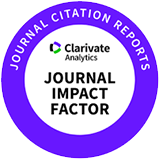Effects of dietary supplementation of illite and bentonite in weaned piglets challenged with Escherichia coli
Abstract
The objective of this study was to investigate the effects of illite (IT) and bentonite (BE) on growth performance and intestinal health in weaned pigs challenged with <italic>Escherichia coli</italic>. A total of 24 (Duroc × Yorkshire × Landrace) weaned pigs (initial body weight: 9.61 ± 0.65 kg, 28 ± 3 days old) were assigned to six treatments with four replicates per treatment. Pigs were housed in individual pens for 17 days, including a 3-day adaptation period and 14 days after the first <italic>E. coli </italic>challenge. In the <italic>E. coli</italic>-challenged groups, all pigs were orally inoculated with a total of 10 mL of <italic>E. coli</italic> for three consecutive days. The experiment was conducted in a 2 × 3 factorial arrangement of treatments consisting of two challenge levels (challenged and non-challenged) and three types of clay mineral (non-supplemented, illite (IT), and bentonite (BE)). IT and BE were included in the diets at 1% and 1.5%, respectively. <italic>E. coli</italic><italic> </italic>challenge reduced (<italic>p</italic> < 0.05) ADG, ADFI, and G:F during the entire experimental period and lowered (<italic>p</italic> < 0.05) serum interleukin-8, interleukin-10, malondialdehyde, and interferon-gamma (IFN- γ) levels on D 3. However, in the <italic>E. coli</italic>-challenged group, IT supplementation improved (<italic>p</italic> < 0.05) G:F compared to the non-supplemented group during the first week. Additionally, IT supplementation increased (<italic>p</italic> < 0.05) blood IFN- γ and mucin expression levels compared to the non-supplemented group in the challenged groups. At the end of the experiment, intestinal morphology and intestinal immunity were evaluated to assess intestinal health. <italic>E. coli </italic>challenge reduced (<italic>p</italic> < 0.05) villus height and tight junction protein expression while increasing (<italic>p</italic> < 0.05) crypt depth. In the <italic>E. coli</italic>-challenged group, BE supplementation increased (<italic>p</italic> < 0.05) villus height and the expression of tight junction proteins compared to the non-supplemented group. Additionally, IT supplementation in <italic>E. coli</italic> challenge increased (<italic>p</italic> < 0.05) mucin expression levels in the intestine compared to the non-supplemented group. In conclusion, dietary supplementation with IT and BE mitigates the adverse effects of <italic>E. coli</italic> infection and suggests their potential as effective additives for managing <italic>E. coli</italic> challenges.
















